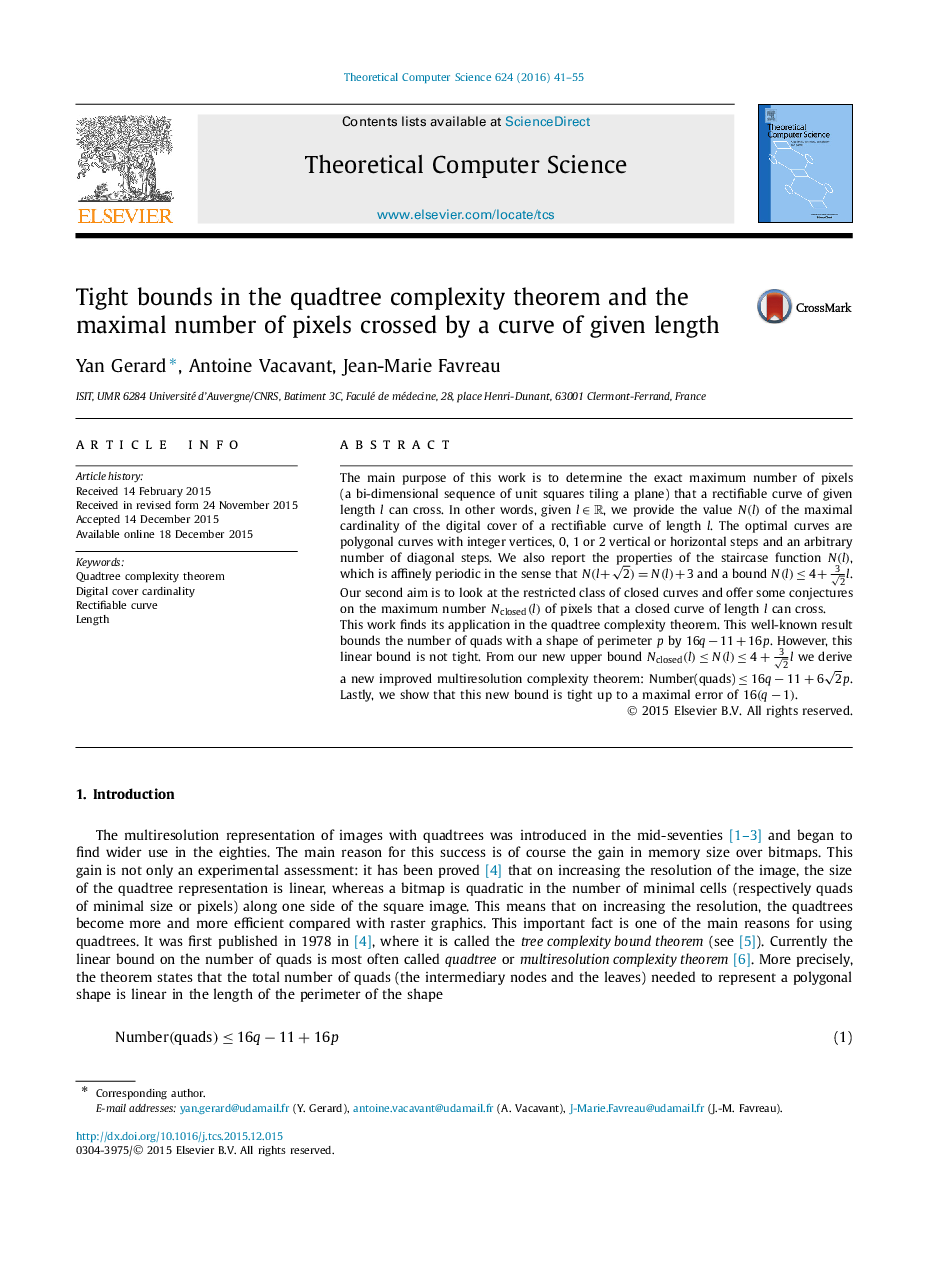| Article ID | Journal | Published Year | Pages | File Type |
|---|---|---|---|---|
| 433815 | Theoretical Computer Science | 2016 | 15 Pages |
The main purpose of this work is to determine the exact maximum number of pixels (a bi-dimensional sequence of unit squares tiling a plane) that a rectifiable curve of given length l can cross. In other words, given l∈Rl∈R, we provide the value N(l)N(l) of the maximal cardinality of the digital cover of a rectifiable curve of length l . The optimal curves are polygonal curves with integer vertices, 0, 1 or 2 vertical or horizontal steps and an arbitrary number of diagonal steps. We also report the properties of the staircase function N(l)N(l), which is affinely periodic in the sense that N(l+2)=N(l)+3 and a bound N(l)≤4+32l.Our second aim is to look at the restricted class of closed curves and offer some conjectures on the maximum number Nclosed(l)Nclosed(l) of pixels that a closed curve of length l can cross.This work finds its application in the quadtree complexity theorem. This well-known result bounds the number of quads with a shape of perimeter p by 16q−11+16p16q−11+16p. However, this linear bound is not tight. From our new upper bound Nclosed(l)≤N(l)≤4+32l we derive a new improved multiresolution complexity theorem: Number(quads)≤16q−11+62p. Lastly, we show that this new bound is tight up to a maximal error of 16(q−1)16(q−1).
